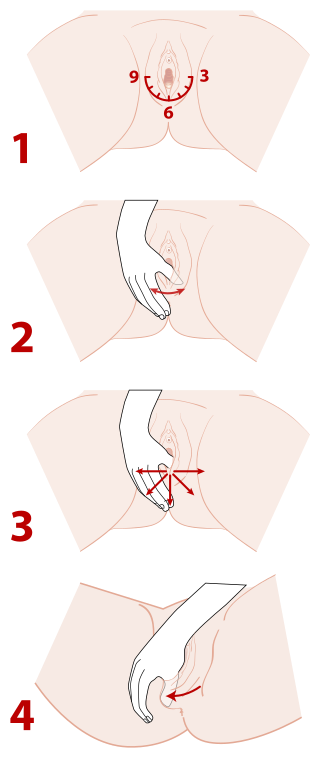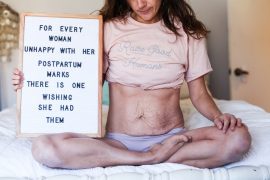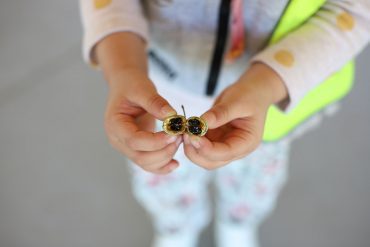By Susan Bradley
I wanted to chat to you today about something that most women (if not ALL women) fear and worry about in pregnancy. And that is tearing in birth. So anything that you can do to reduce the risk of having a tear, is surely good to know, yes? And there are things you CAN do in pregnancy and in labour too, to help to minimize this happening. So this post is going to help you know what you can do to help reduce tearing in labour, so you can reduce this fear and feel more calm and confident through your pregnancy and in your labour (reducing fear about birth is REALLY important for the physiological process of labour to happen uninterrupted and as naturally as possible).
I’d also like to say that its actually very uncommon for women to actually feel themselves tearing, due to the intensity and pressure that occurs during this stage of labour. Often women will be told they have a small graze or tear and express surprise as they didn’t feel it happening. And a small graze or tear can often heal on it own, or with a few small stitches done by the midwife. We discuss this more in my Hypnobirthing & Birth Preparation Courses.
So here are my top tips for reducing tearing in labour:
1) Understand your body in labour
Firstly you need to really understand how your body works to birth your baby, and what’s going on in your body throughout the whole process of labour. How the hormones work, how your muscles work and how the mind can influence this hugely. If you don’t understand your body and how it’s working in labour to birth your baby, then this can make you worried and fearful, and tight and tense – including in the pelvic floor. And you really need to relax and release your pelvic floor in second stage labour. In hypnobirthing we call this the “down” stage, also known as the “pushing” stage of labour. So you need to have really good antenatal and birth preparation classes and information in pregnancy to really understand your body and your mind and how they can work together in the best possible way. This is important, because if you don’t understand this, and you tense your body (including your pelvic floor), then the chance of tearing is increased hugely.
2) Working with your body in labour
When you are in the “down” stage, the second stage, if you feel the need to push and to bear down then listen to your body and go with it. You don’t need to actively force and push your baby out (this can tense you body – and as explained above we don’t want to do this), but working “with” your body and not “against” it and being in tune with it is really important. That’s why your learn the “down” breathing in hypnobirthing labour, so you are working WITH your body to move baby down, and allowing your breath to help this.
3) Not being afraid
Many mums are scared about a tear. So if you are fearful and you tense, and are gripping and holding your pelvic floor and resisting, then it’s more likely to tear. So let’s release that fear now, in pregnancy, so you can relax and let go once you are in labour. ANY type of fear in labour can inhibit your body working in the best way possible. It affects the hormones of labour (see more about this in my video all about oxytocin and adrenalin).
4) Knowing that your body was designed to birth your baby
It’s really common for women to feel that birth is somehow a process that needs help, that we need to go to a hospital to birth in case our body can’t do it. Birth has become, over the last 50 years, far more medicalised. Your body is absolutely designed to do this. Your perineum is designed to stretch – it has a huge amount of stretch, and it does so beautifully. Feel confident in your amazing body. It’s just done the most magical and miraculous thing, it’s spent nine months growing a baby, so of course it absolutely knows how to birth your baby too.
5) Perineal massage
Preparing the perineum during pregnancy has been shown to reduce the risk of tearing in mothers having their first vaginal birth. Perineal massage can help a woman to become familiar with her own body and have confidence in its ability to stretch and birth her baby, and also start to physically stretch and loosen this area ready for birth. It’s suggested to do this in pregnancy three times per week or more from around 32/34 weeks.
Why is perineal massage beneficial?
~ Perineal massage stimulates the flow of blood to the perineum – the skin around the vaginal opening and between the vagina and rectum.
~ It prepares the skin for stretching over your baby’s head during the delivery stage, increasing elasticity and reducing the risk of tearing or needing an episiotomy.
~ It will also help you to become familiar with the sensations (stinging, burning, tingling) that are present during birth and allows you to feel more connected to the process.
~ The use of oil also helps the skin to become more supple.
It can be helpful to do after a bath or shower when the skin is softer.
Avoid if there are vulvic varicosities (haemorrhoids around the vulva), vaginal herpes, thrush.

How to do perineal massage:
~ Wash your hands. Sit or lean back in a comfortable position, or squat, or put one foot up on the toilet. Some women lie on their side and bring their hand round the back.
~ Use an unscented vegetable oil, such as sunflower oil or olive oil on your thumbs or fingers and around the perineum. You can also get special perineal massage oils too.
~ Place one or two thumbs (or fingers if you can’t reach) about 1 inch (2-3 cms) inside your vagina. Press downwards and to the sides at the same time (3). Gently and firmly keep stretching until you feel a slight burning, tingling or stinging sensation.
~ Hold the pressure steady at that point with your thumbs for about 2 minutes until the area becomes a little numb and you don’t feel the tingling as much.
~ Keep pressing with your thumbs. Slowly and gently massage back and forth over the lower half of your vagina (2). Do this for 3-4 minutes.
~ Remember to avoid the urinary opening. You can start with very gentle massage, increasing the pressure as sensitivity is reduced.
~ As you massage, pull gently outwards (forwards) on the lower part of the vagina with your thumb(s) hooked inside (4). This helps stretch the skin as the baby’s head will stretch it during birth. Work in a U shape.











